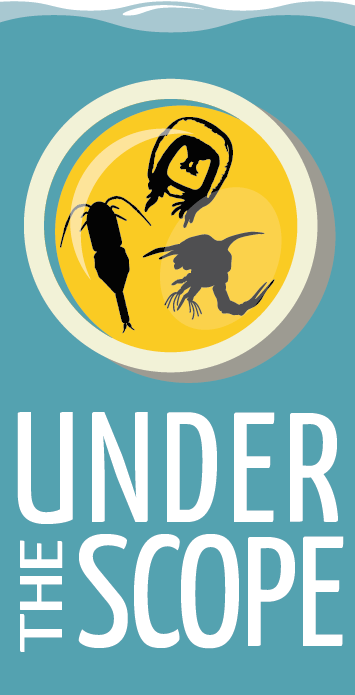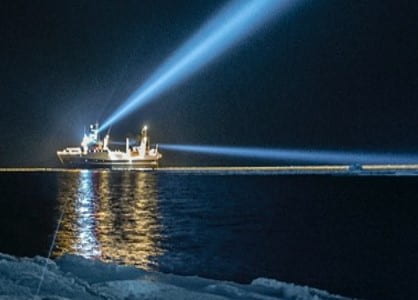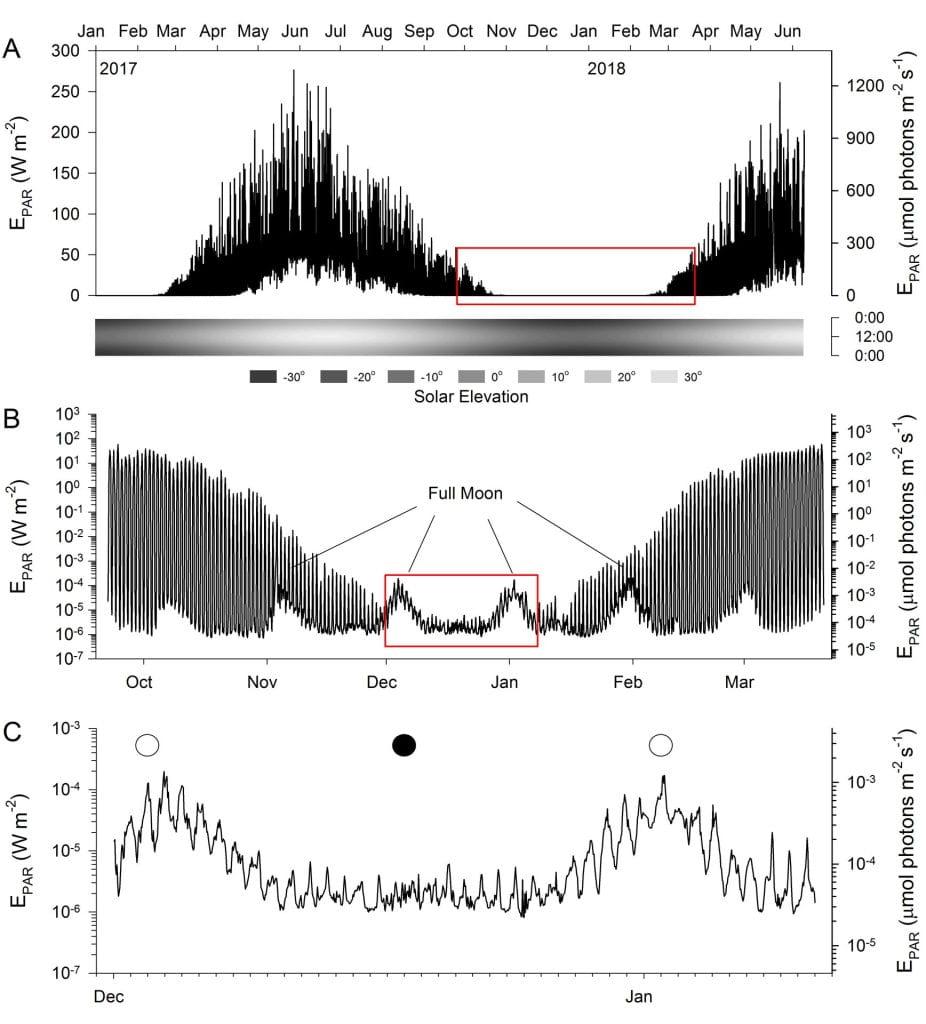Light and Life in the Arctic Polar Night


In its most simple definition, Polar Night occurs when the sun remains below the horizon throughout the day. That is, solar elevation remains less than 0° over the 24-h day. When considering the number of days each year that this occurs, the duration of Polar Night increases by approximately 6 days for each degree of latitude. Accordingly, Polar Night lasts ~1 month at 68° N, 3.5 months at 78° N, and 5.5 months at 88° N, extending to a full 6 months at the North Pole. Our research is focused on understanding the light environment in the Arctic with an emphasis on the Polar Night period, and how this light affects polar biology.

Using an atmospheric light observatory located in Svalbard at 79° N, and equipped with novel light sensor technologies, we have measured biologically relevant light throughout the Polar Night. While light during the Midnight Sun period (constant daylight) is much higher than light during Polar Night, we nevertheless can see a daily light cycle during Polar Night. And, the lunar cycle is also evident as periods of full moon are brighter than periods of new moon.

We have found that these Polar Night light levels are biologically relevant. We use computer models to calculate how much of the measured light at different colors (wavelengths) ends up below the water surface. Then we use electrical measurements from the nerve cells of marine animal eyes (electrophysiology) along with measurements of animal behavior in response to light in order to understand how these levels of light affect vision, entrainment of biological clocks, and ecologically important behaviors such as diel vertical migration.


